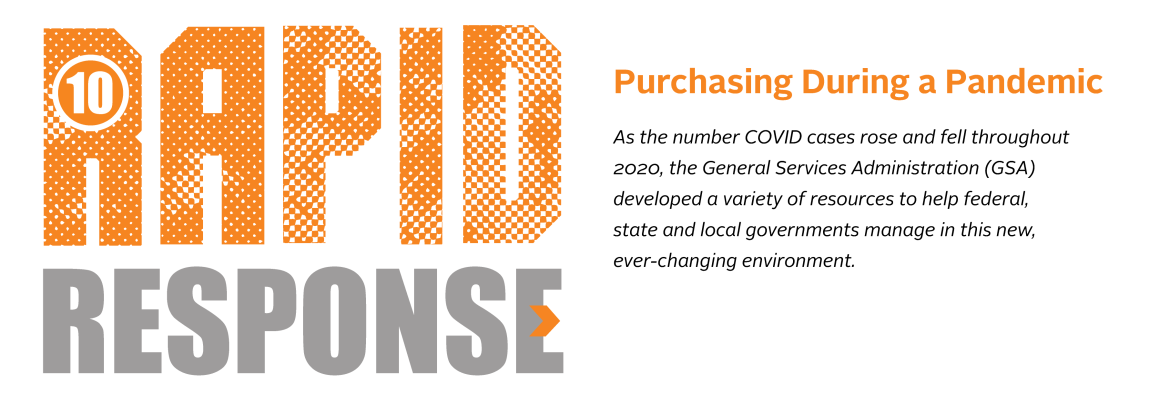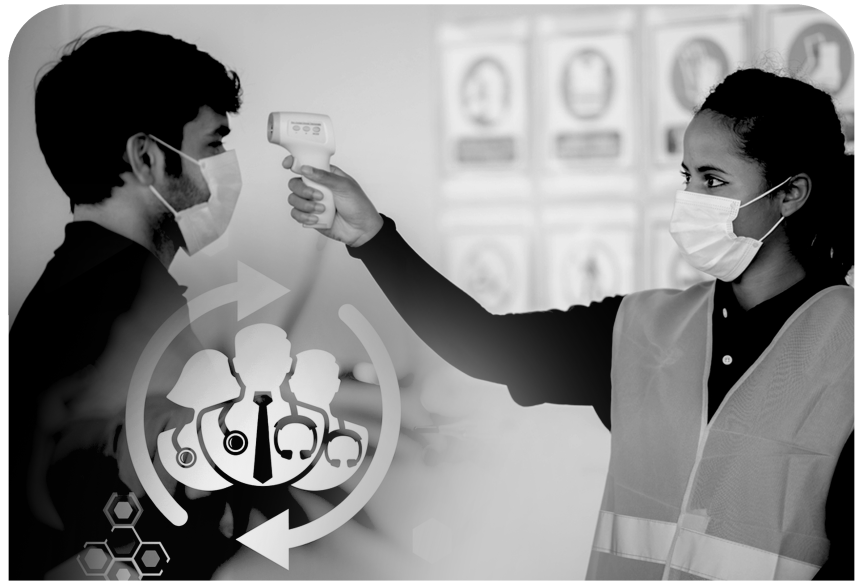R10 Rapid Response 4


Working with federal, state, local, and tribal partners, GSA created contracting resources to access medical supplies and equipment, products, and even human resources. That’s when GSA, as the acquisition arm of the federal government, determined it could use its purchasing power and expertise to help out.
The Federal Emergency Management Agency and GSA teamed up early in the pandemic to roll out a unique purchasing opportunity for struggling communities - using the government’s purchasing power to allow federal agencies and even states, cities and towns to purchase through already existing federal programs.
In addition, GSA conducted market research to identify vendors who could help federal agencies for specific needs, essentially creating a one-stop-shopping experience focused on helping agencies find vendors to provide health screenings for people entering federal buildings. This effort would hopefully save time and taxpayer money when using the GSA schedule.
By April, 2020, much of the federal government workforce teleworked, but a few employees still needed to access federal space. Property managers and federal agencies were working through how to safely have employees access federal buildings in the midst of the pandemic. GSA’s Office of Professional Services and Human Capital (PSHC) Categories, based in Auburn, Washington, was asked to support the Public Buildings Service, other federal agencies, and state and local governments in procuring enhanced entry screening services for government facilities.
“We recognized that federal agencies would need contract support to provide entry screening services at federal facilities. We put together a tool kit to help them quickly find vendors that could meet the need,” said Kimberly McFall, director of the Region 10 Assisted Acquisition Office.
A GSA cross-functional team worked to identify vendors who could supply medical personnel to agencies needing to screen anyone entering federal workspaces. They identified more than 60 vendors, consisting of both large and small businesses, that were able to perform these screening services and combined this information under the Enhanced Entry Screening Services heading.
In addition, a GSA team prepared a series of ordering guidance, templates, and acquisition resources to help ordering agencies quickly obtain these services in response to the pandemic.
This proved invaluable for agencies like the Department of Energy who needed professionals to screen staff at the Vancouver and Spokane, Washington Bonneville Power Administration (BPA) control centers, where they manage and market wholesale electrical power from 31 different hydroelectric projects throughout the Northwest.
“We really had no idea where to go and this was a great starting point for us,” said Daniel Guffey, Quality Assurance Officer for BPA. “GSA had done the first stage of vetting (the vendors) for us for entry point screeners and GSA helped speed up the process.”
In addition to the screening services, GSA’s Region 10 set up Basic Ordering Agreements to support state and local governments in the states of Alaska, Idaho, Oregon and Washington in procuring hospital support services. This came as a mission request from the U.S. Department of Homeland Security’s (DHS) Federal Emergency Management Agency (FEMA) to help ensure overloaded hospital systems could react to community healthcare needs.

“Recall back in June when hospital beds were full and there was no room for additional patients?” asked McFall. “This was a way for GSA to quickly get temporary help for hospitals setting up additional treatment areas in a community. GSA already had access to all these resources.”
From medical supplies and support medical staff to complete wrap-around services like food services and cleaning services, GSA helped connect hospital systems with the necessary vendors to assist in standing up additional medical facilities.
Region 10 identified vendors that had the capability to perform the requirements in the four state region and prepared ordering guidance and procurement resources to facilitate ordering. This simplified the buying process for state and local agencies so they could provide these services in a timely manner.
“It’s (identification of vendors) meant to help with overcrowded hospitals and being able to collaborate with state and local partners is very important for our communities,” said McFall. “These partners appreciate that help and what we could bring to them through the federal government. It’s what I’m most proud of.”
Story by:
Chad Hutson, Public Affairs Officer
Layout by: Cynthia Henry, Graphic Designer
Read more of the GSA “R10 Rapid Response” series:
- Part 1: R10’s Industrial Hygienist Looks Back Over a Demanding Year
- Part 2: The Air that We Breathe
- Part 3: ROB on the Move…Wait
- Part 4: Purchasing During a Pandemic

 U.S. General Services Administration
U.S. General Services Administration